|
|||||||||||||||

There are some places in this world, that I heard about as a child and that instantly fascinated me. Places which I never ever in my wildest dreams could have imagined being able to see with my own eyes. And the Temples of Angkor in Cambodia is one of these places. War was raging in this far away country during my childhood, a country so exotic in my mind, but so totally inaccessible.
Years, no, decades went by before I realized that I actually could go here, visit, and see the marvels of Angkor myself! And when that realisation hit my mind, it didn't take long before I started to plan a visit. The area is huge, the numbers of temples to visit is endless and the experience was even beyond the imagination of my childhood.
One of the temples that I visited is the "Bayon", one of the most visited temples in the Angkor area.
All the photos in the collage below are clickable, so you can view the larger photo.
"Bayon"
The temple of the many mystic smiles
The Bayon, the temple of the many mystic smiles.....
It is early morning when we arrive here, the sun has just gone up, but enough so for the sun rays to light up the temple and the columns with the smiling faces in stone. This place is unique, with its enormous faces carved in the stone, and that small touch of a smile. And I feel so blessed that I have the chance to visit and see it with my own eyes.
The Bayon is part of the temples of Angkor, and it is located in the center of the city of Angkor Thom. It was built during the reign of the famous King Jayavarman VII from the late 12th century to early 13th century, approximately 100 years after Angkor Wat.
Its magic is does not appear from a distance, where it looks more like a pile of stones. But when you come closer to and inside the temple which is - to my surprise - very open, the faces start to appear and reveal its magic on you.
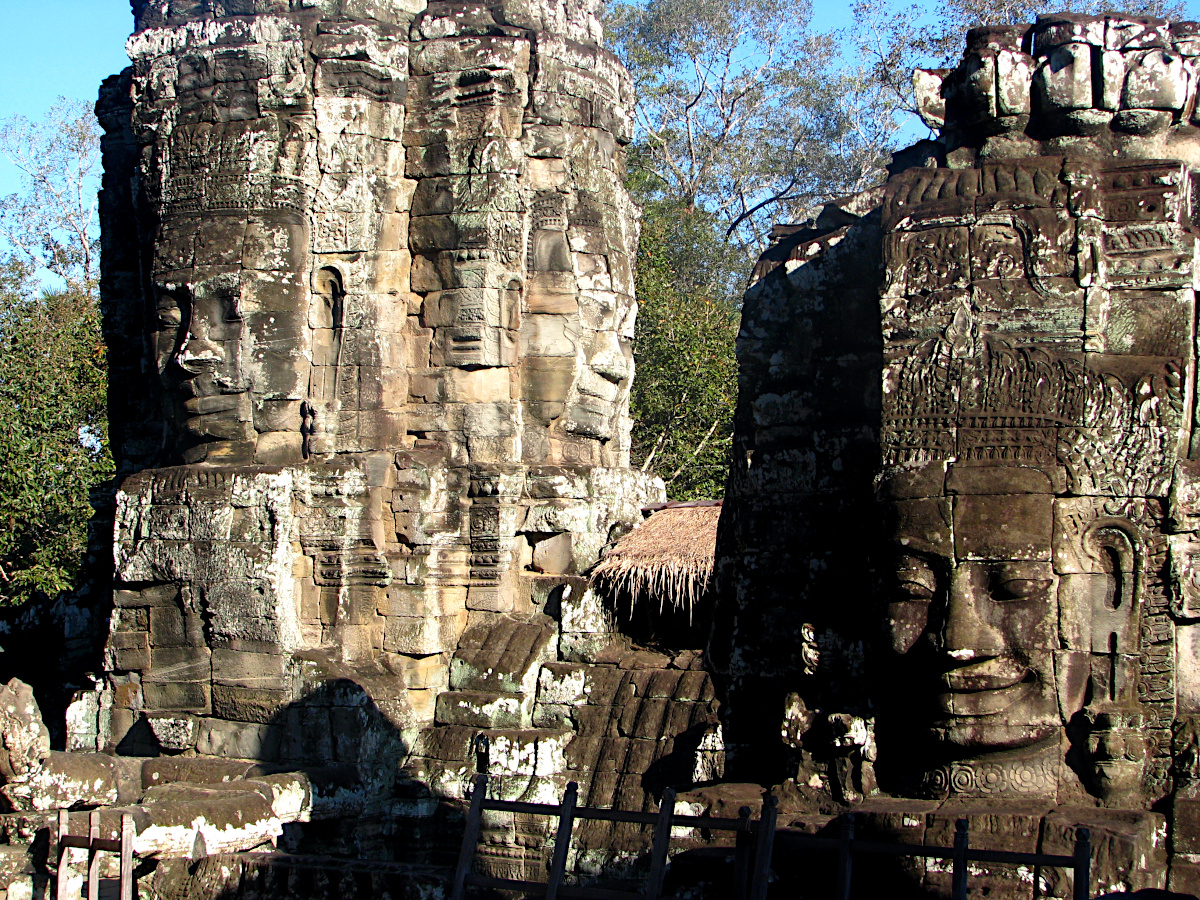
Bayon has 54 towers (37 standing) and as many as 216 faces, all of an ever smiling Avalokiteshvara; a Bodhisattva or an art of an enlightenment-being.
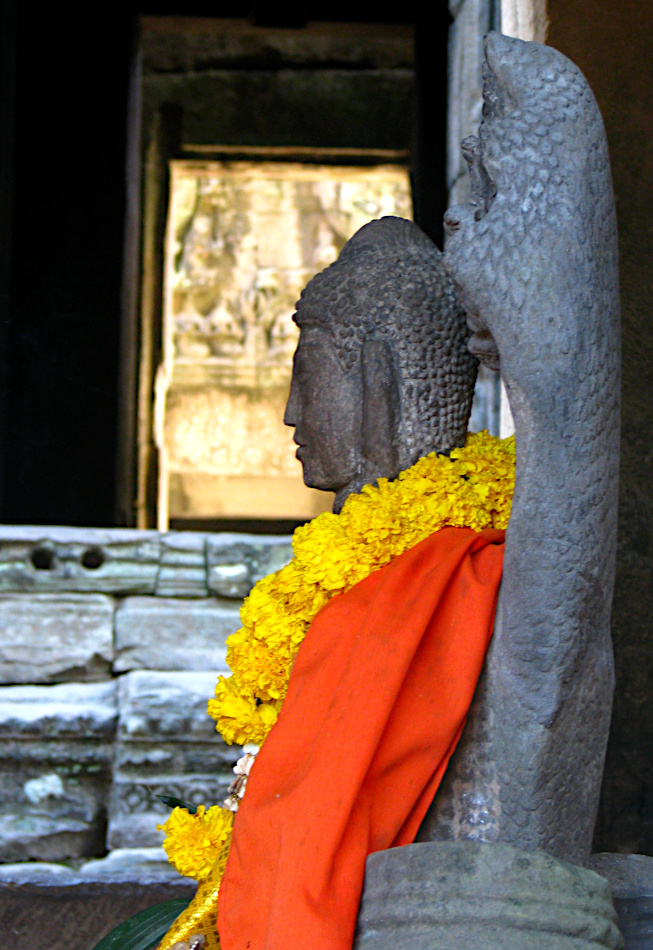
The main temple mountain of the Bayon Temple is surrounded by two galleries holding an extraordinary collection of bas-relief scenes of legendary and historical events. It has over 1.2 Km of bas-reliefs on the outer wall of the outer gallery with more than 11.000 carved figures. They were probably originally painted, but this has long since faded. Most of them depict every day's life scene of the Cambodia in the XII century and the battle between the Khmer and Champa.
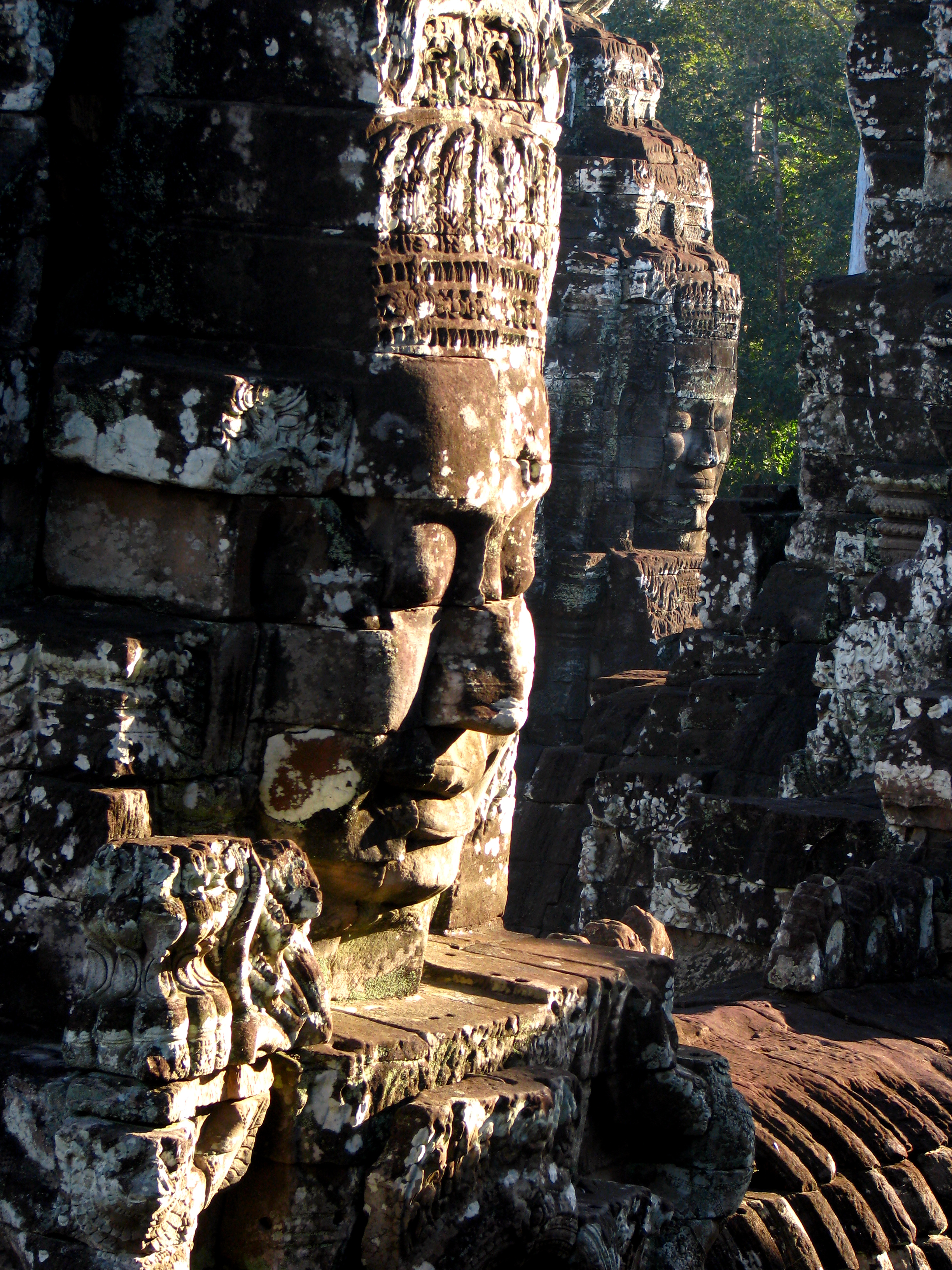
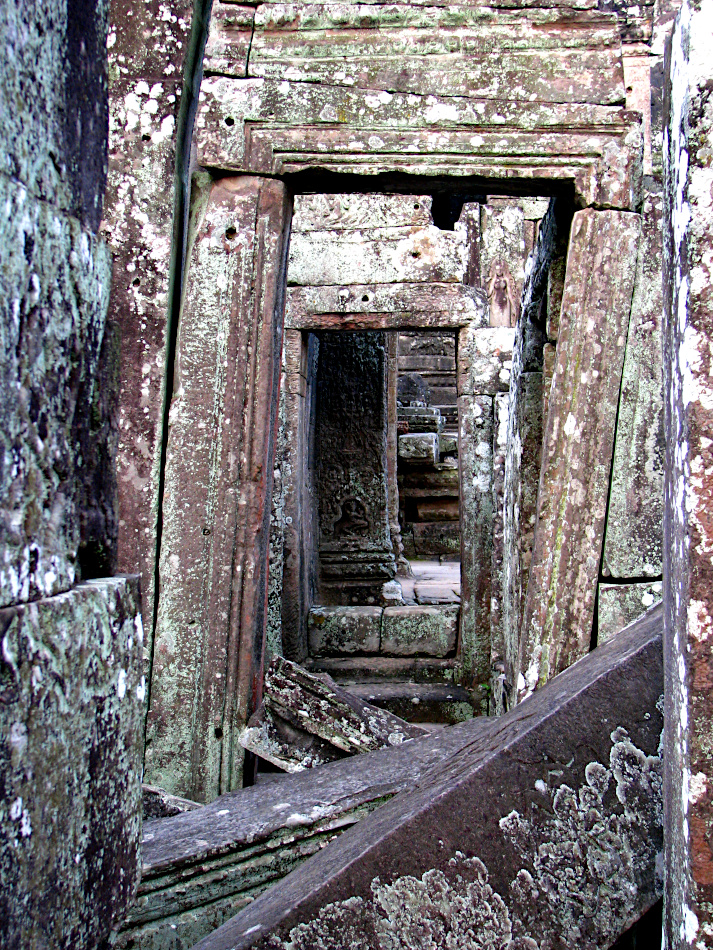
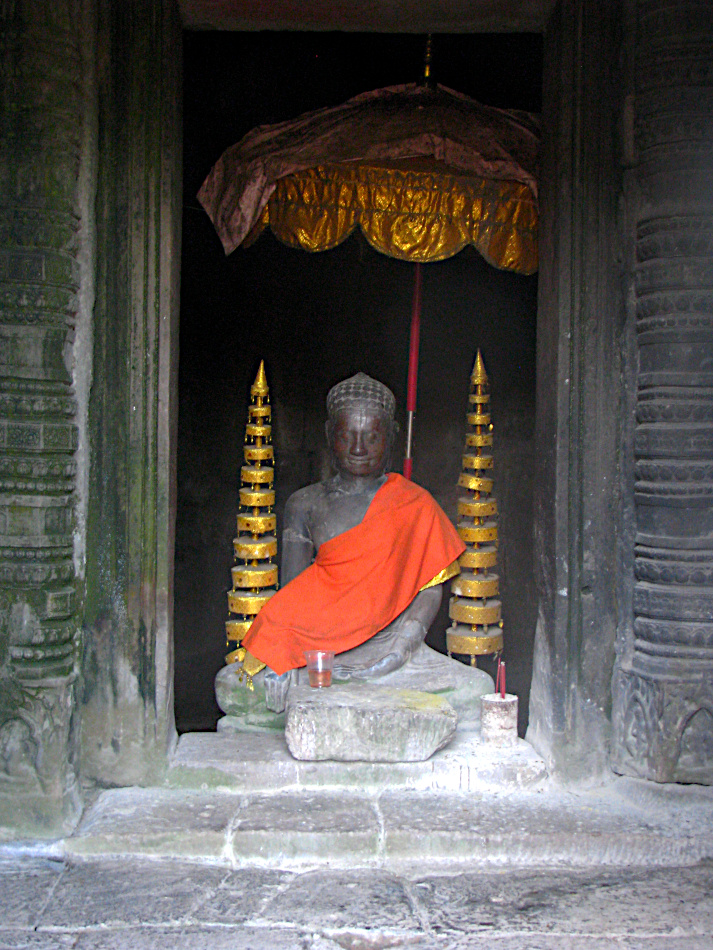
You've seen the faces and the bass reliefs, but there is more than just that to the Bayon. There is such a charm to the Bayon, which is hard to describe in words or even photos. Just take your time and wander through its complex maze of chambers, passages, and occasionally steep stairways, and discover the Bayon in leasure. You might end up in dead ends, where big beams block the entrance; come across one of the many Buddha statues dressed in orange, or simply see another pair of those mystic smiles but from a totally different but mesmerizing angle.
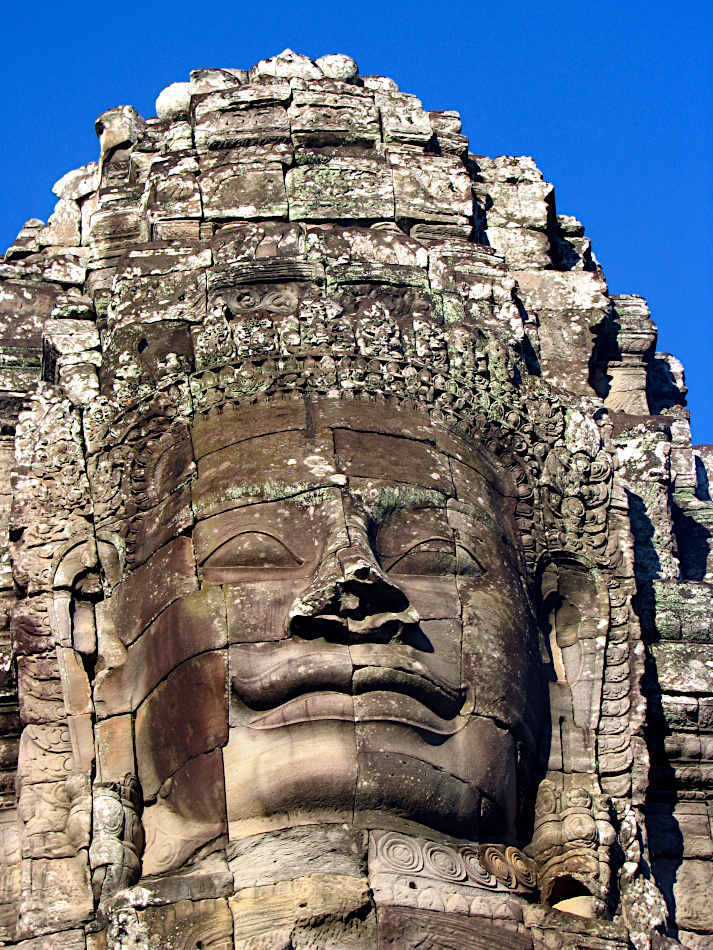
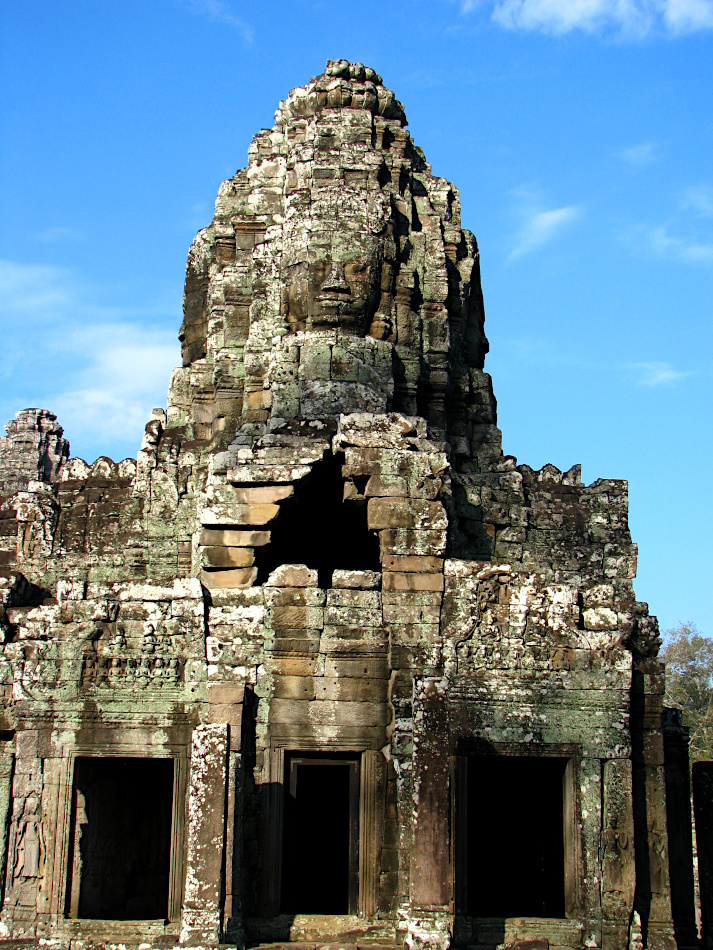
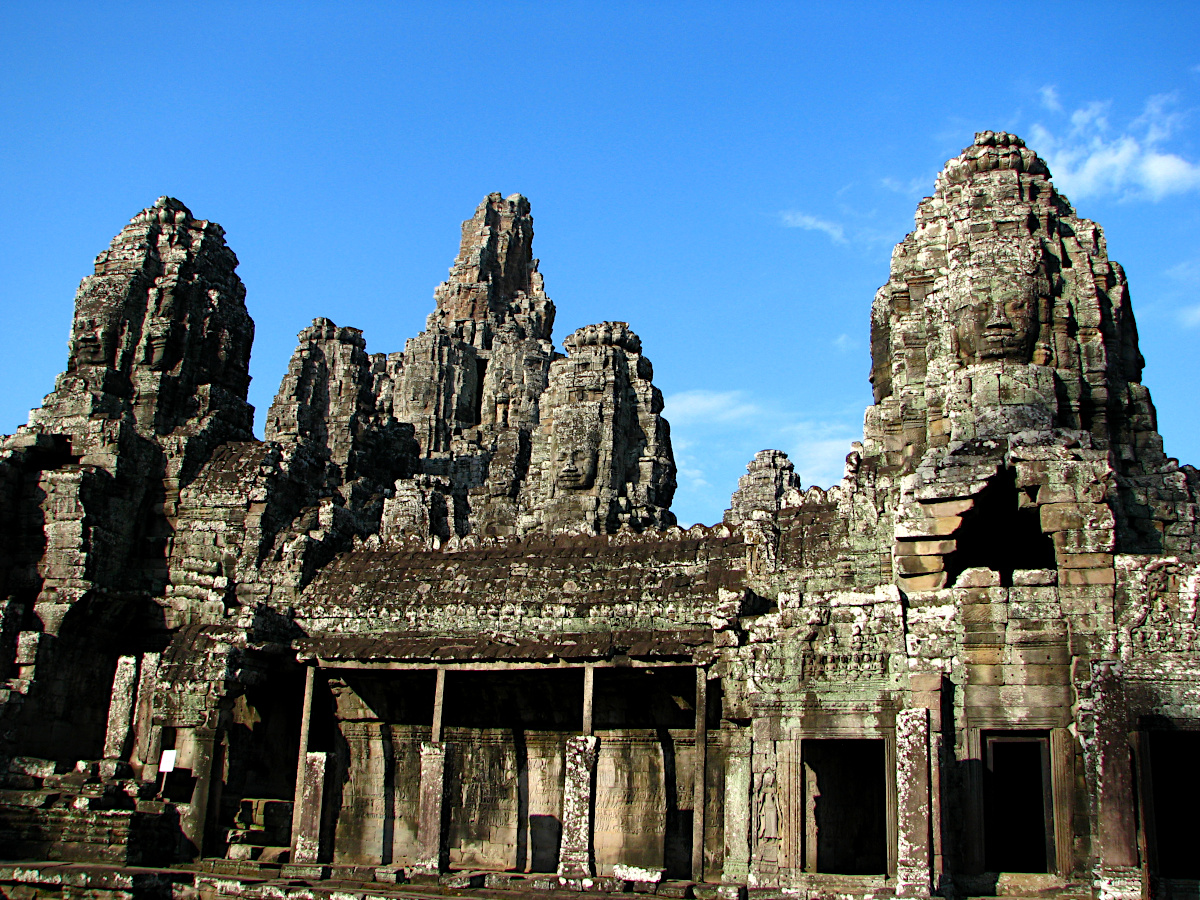
To be honest, I visited the Bayon twice, as I couldn't get enough of this place. (One early morning as mentioned before. And during early morning there was already quite a crowd visiting the Bayon). But the second visit was during a late afternoon. My tuktuk passed the Bayon on the way, and while admiring the Bayon from the tuk-tuk, I suddenly realized it was 'relatively' deserted. So I quickly requested my driver to stop, and I quickly hopped out to do a spontenous visit to the Bayon. And what a great decision this was! The stone faces were lit up by the sun, and once more I got myself lost in the labyrinth of chambers, passages and towers and the ever smiling stone faces.
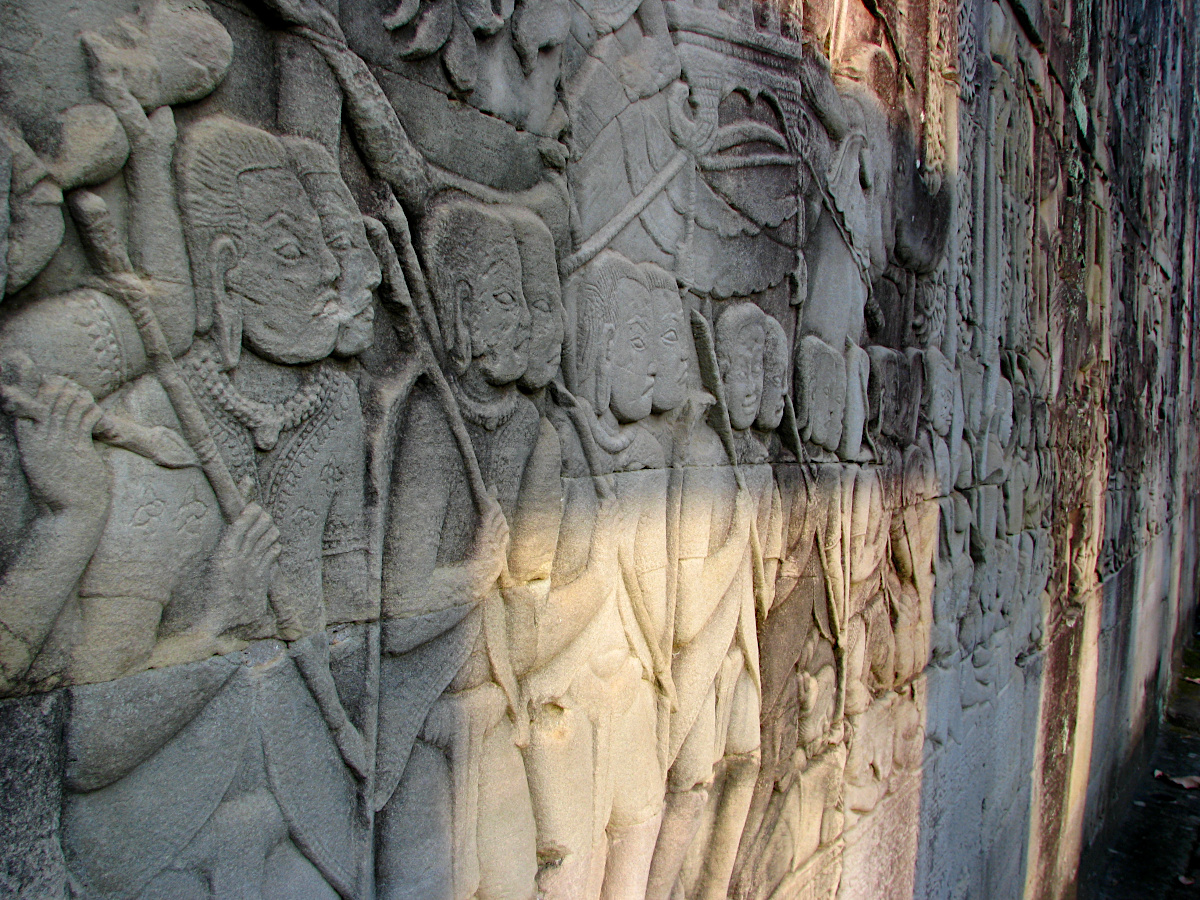
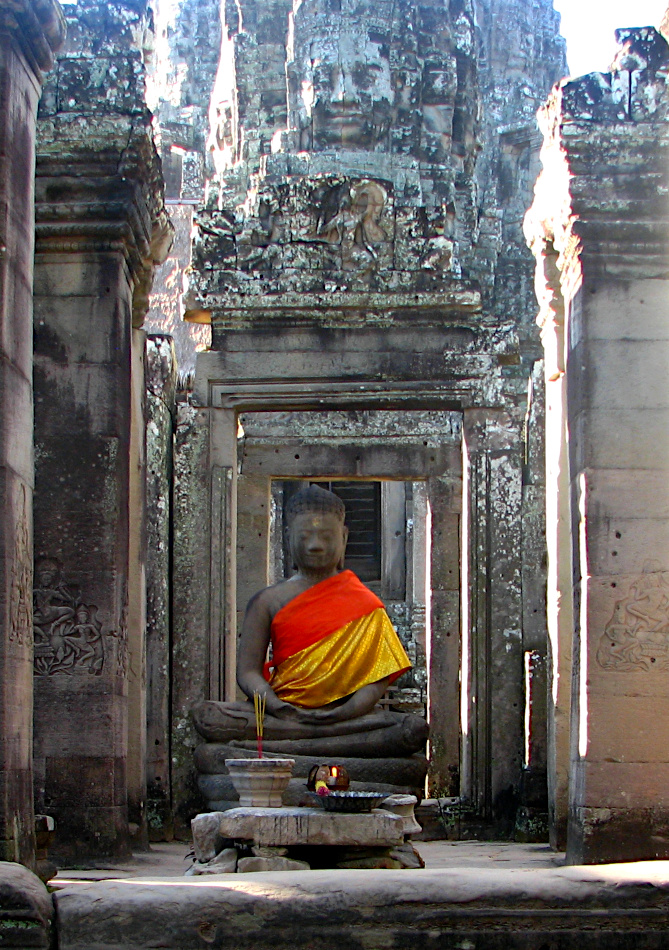
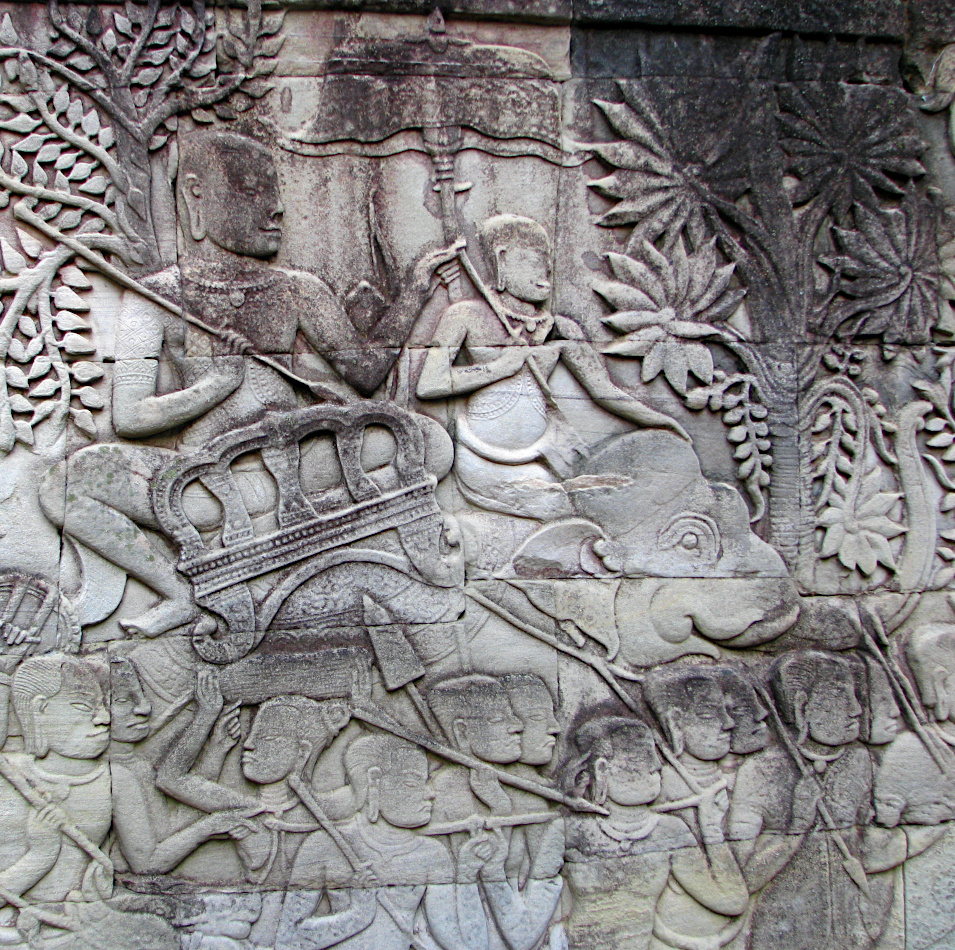
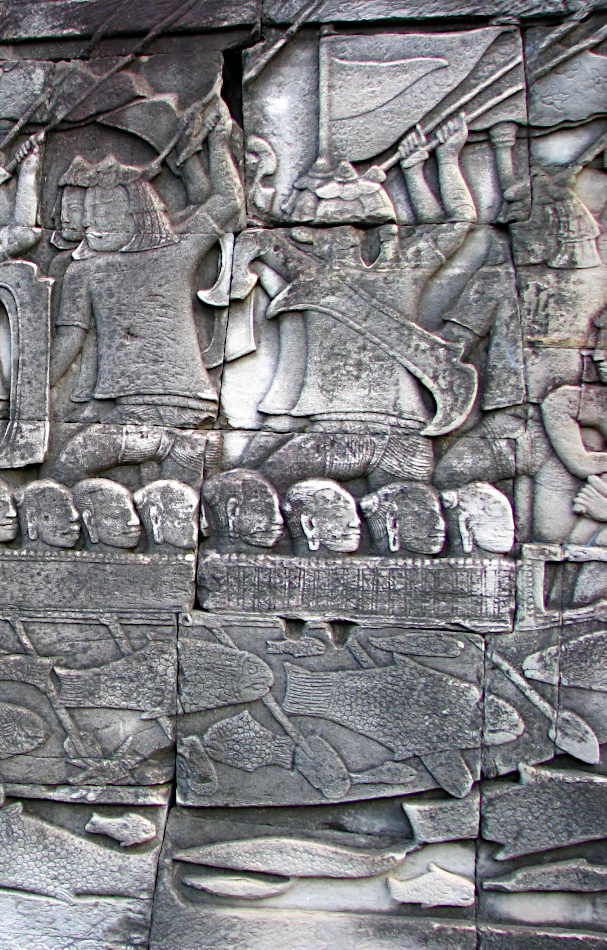
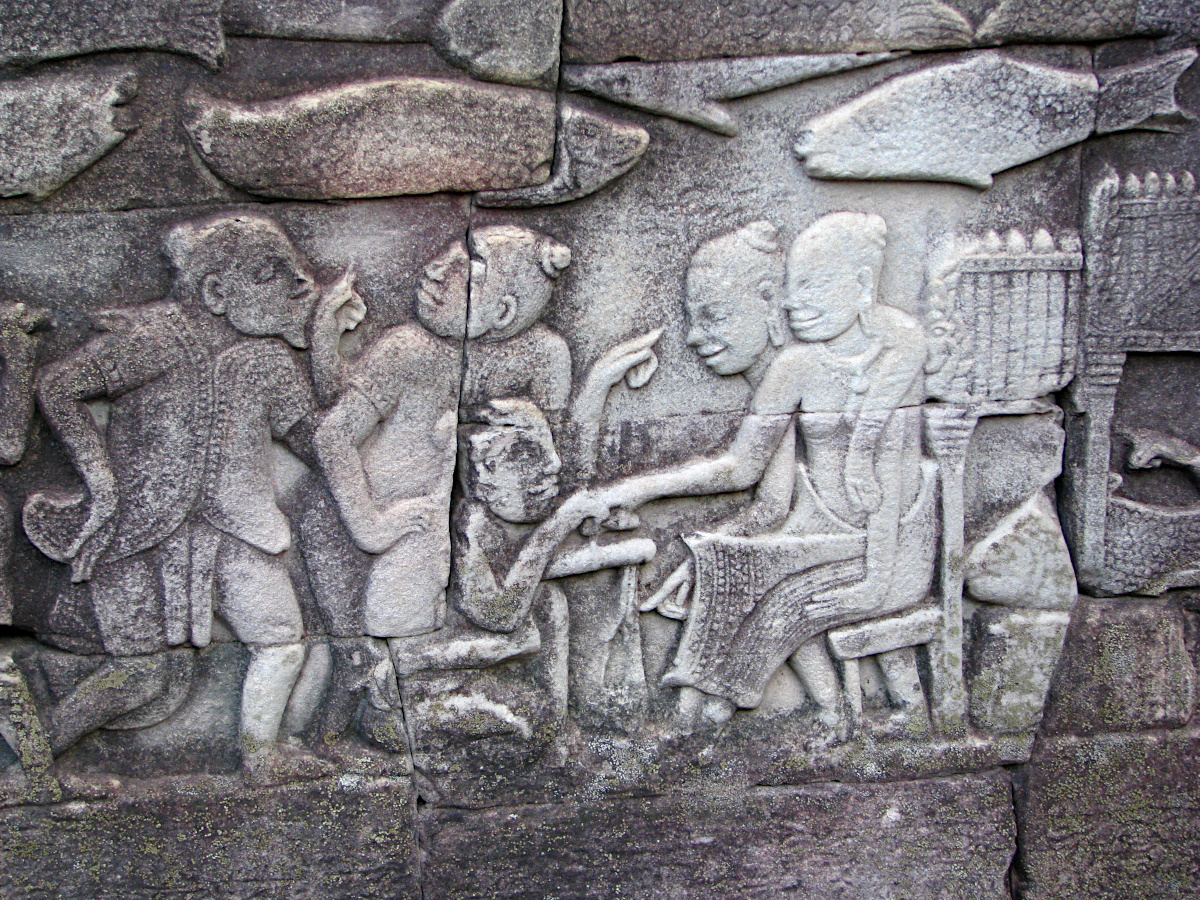
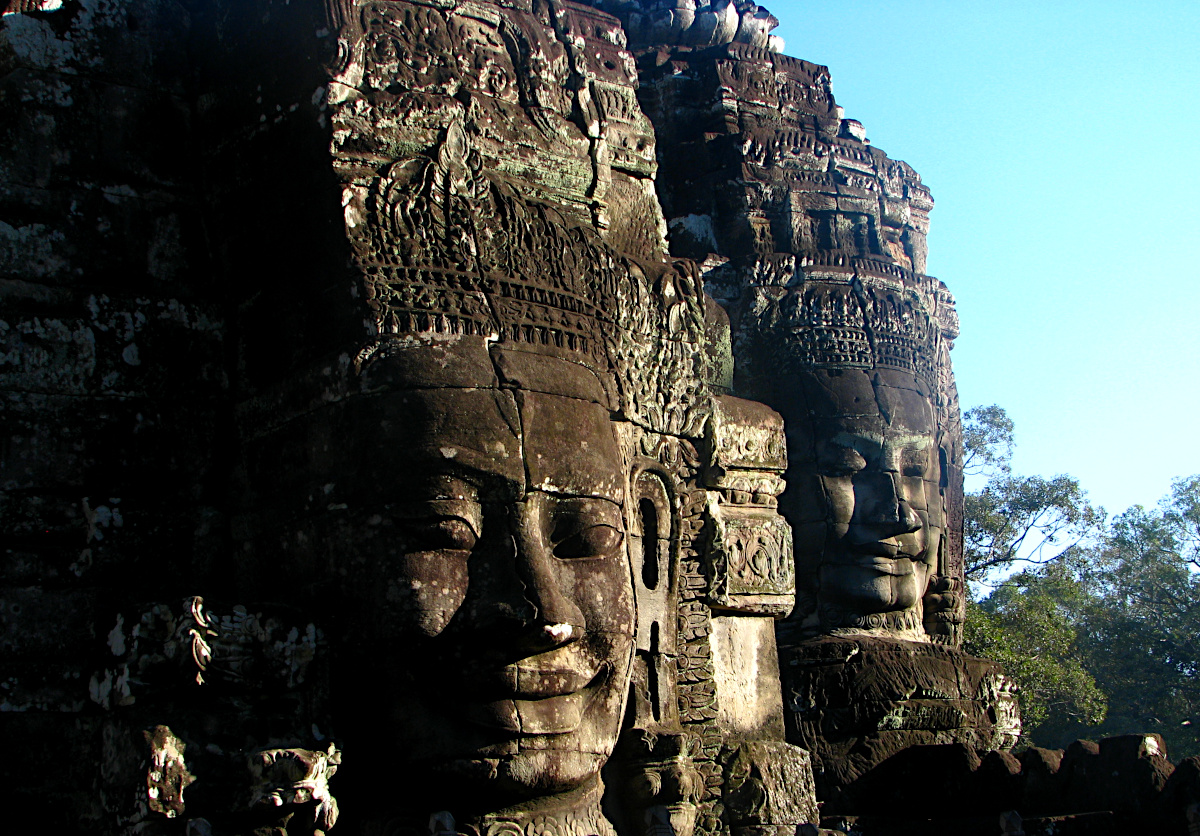
While its basic and earliest structure of the temple are unknown, it is clear that Bayon temple was built on the top of another older monument and that it was not built during a single construction period. The Bayon temple consists of 54 towers which represent the Khmer Empire Period (Angkor period). The main tower is located in the center and called “the Gold Tower” showing four faces. The iconography of the four faces represent the Bodhisattva Avalokiteshvara – Lokeshvara – and they are generally believed to to be the four faces of King Jayavarman VII demonstrating the omnipresence of the king. The faces also symbolize the four smiling faces which are the charming smile, sad smile, glad smile and beautiful smile. In total we have about 200 different faces in our culture.
A Buddhist temple, it is the last mountain temple that was built in the style of Khmer Arts and consecrated to this religion. The Bayon Temple is one of the most famous after Angkor Wat, and millions of tourists come each year to see it.
Simone & Åke, 2009, Temples of Angkor, Cambodia

It would be great to hear from you!
You can reach me by sending me an Email.
Or leave a comment / reaction in the box below.
You can also follow me on Facebook: Sim1 Travels Blog
:-) Simone